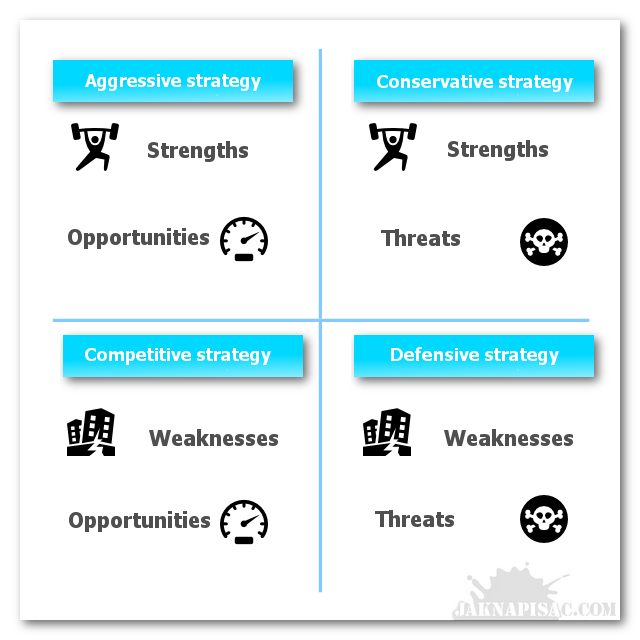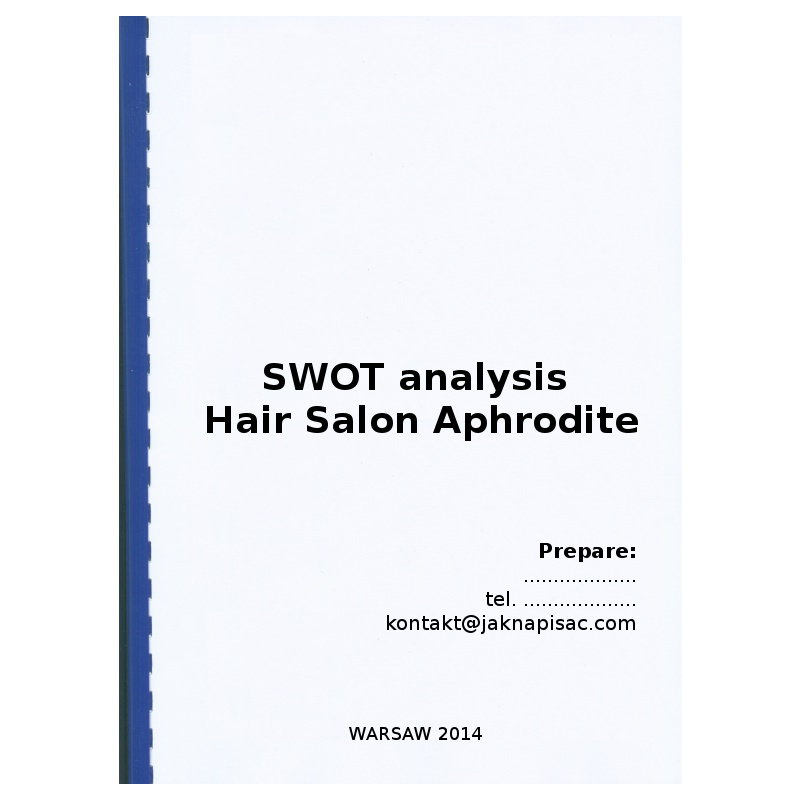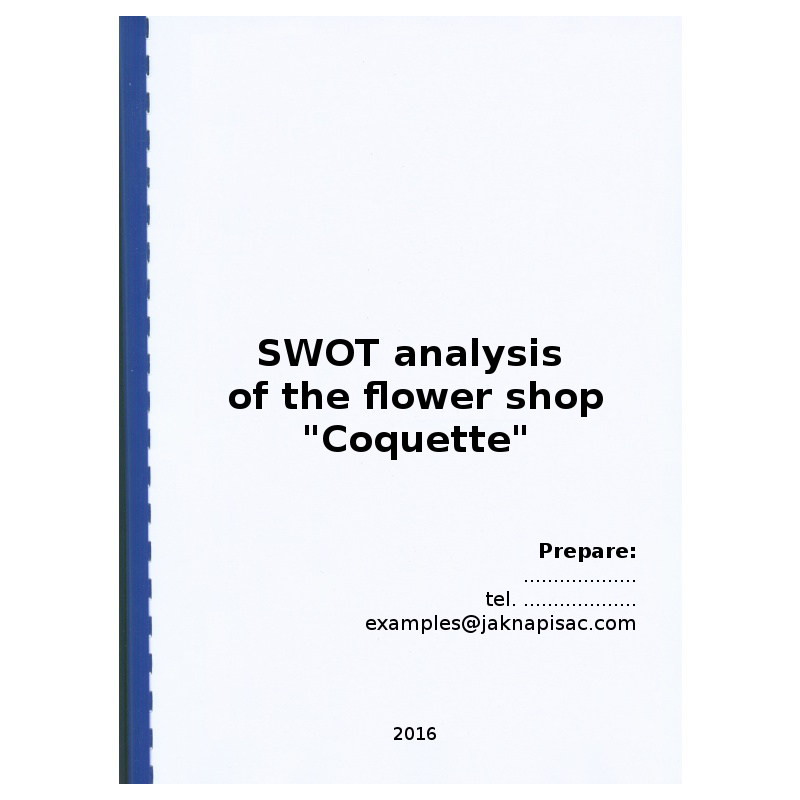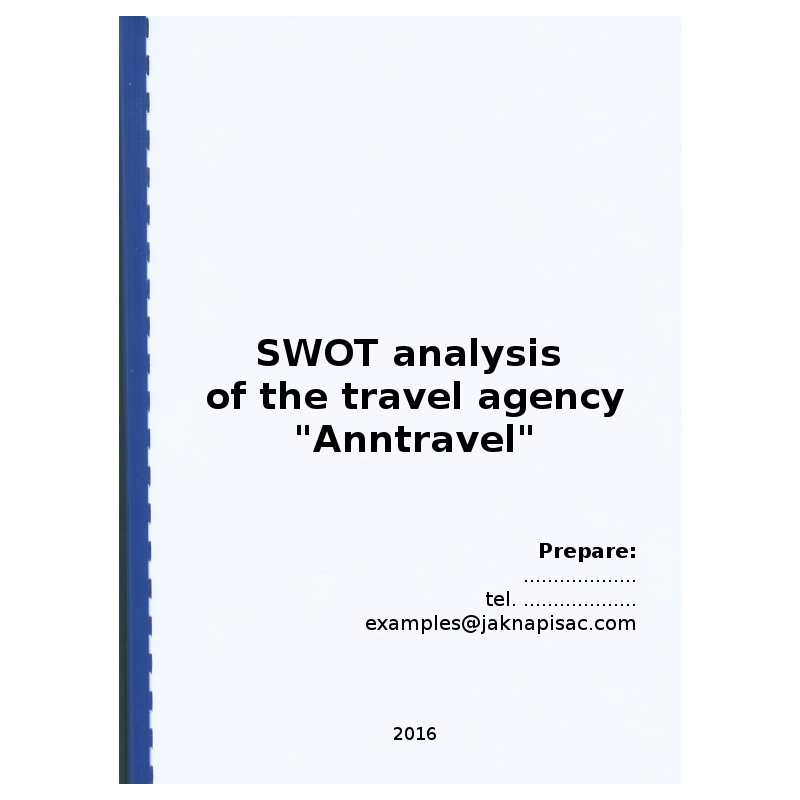If you believe that you have reached a dead point, it may be worth performing the SWOT analysis and finding a satisfying solution. The article refers to what the SWOT analysis is, is it worth to prepare it for an organization, and why it is beneficial.
SWOT analysis
This article discusses SWOT analysis, how to perform it step by step and how to choose a strategy on its basis.
Definition
The SWOt analysis is one of the most popular methods of strategy analyses of an organization. It is and integrated method, which combines business environment with company’s interior. During the analysis, we start with strong and weak sides of the examined organization, which are confronted with the surroundings. You may encounter a statement that it is an approach “from the outside towards the inside”.
This approach arose on the basis of a concept of a force field analysis, developed by K. Levin in 1950s. However, this concept was to strict and complex to become broadly applied in practice. This is the reason why simpler solutions started to appear, in which the SWOT method is included.
The SWOT name is an acronym of the following words: Strengths, Weaknesses, Opportunities, Threats. You may also encounter a modification in a form of SWOT/TOWS analysis, which is slightly more complicated.
The SWOT analysis embraces a diagnosis of a situation of a company in four fields:
- strengths (strong sides) – these are those resources and skills, which enable a company to take an advantageous position on the market, provide an advantage over competition. They need to be taken care for. Examples of strong sides may include: high qualifications of employees, good organization of work, company’s reputation, financial resources, etc.;
- weaknesses (weak sides) – these are the factors that limit efficiency of the enterprise, they hinder its development. They may weaken the strong sides, if they are not overcome in proper time. Examples of weak sides include: overemployment, low quality of the product, low competence, bad reputation, etc.;
- opportunities – these are positive phenomena and trends in the business environment, which while used properly, can support company’s development or weaken the threats. Examples of opportunities: opening of a new market, increase of demand, a new group of customers, etc.;
- threats – these are phenomena that are perceived as negative for the company, all barriers and difficulties, which will hinder its development. They will have a negative influence, if you do not take adequate preventive steps. Examples of threats may include: new competitors, crisis, loss of a significant customer, etc.
Stages of SWOT analysis
1. Collect information on the company and its environment
This is an initial phase, which consists in collecting basic information. Provide answers for questions that relate to operation of the company, its aims, intentions of management. Get to know who the customers are and what needs they have. Get interested in the business environment, company’s main competitors, the market that it operates within, prognoses, etc. You will need all of this data to separate strong and weak sides of the company, as well as opportunities and threats located in its environment.
2. Determine and evaluate strong and weak sides of the organization
Choose those fields of the organization’s operation, its resources or present skills, which you believe are most significant (e.g. customer service, promotion, financial resources etc.). Afterwards, evaluate them in terms of a strong or a weak side.
Evaluation of a factor as a strong or weak side is performed via a point scale where:
- “-2” points mean that the factor is believed to be a very weak side of the company,
- “-1” point means that the factor is believed to be a weak side of the company,
- “+1” point means that the factor is believed to be a strong side of the company,
- “+2” points mean that the factor is believed to be a very strong side of the company.
Fill the key fields of the company’s operation that you identified in the below table and evaluate them.
| No. | Strengths or weaknesses | Evaluation of a factor as a side | |||
|---|---|---|---|---|---|
| 1. | Strengths 1 | ||||
| 2. | Strengths 2 | ||||
| … | Strengths … | ||||
| … | Weaknesses 1 | ||||
| … | Weaknesses 2 | ||||
| … | Weaknesses … | ||||
You can stop with it and move on to determination of opportunities and threats. However, if you have a problem to point the most significant strong and weak sides on the basis of previous analysis, i.e. such which the efforts should be concentrated on, you may implement weights or ranks of separate factors.
In this particular case we will apply ranks. In order to specify a rank of a strong/ weak side, you can use e.g. market research, opinion of the company’s management staff or employed experts, as well as own knowledge on the company. Provide each of the distinguished strong/ weak sides with a proper rank, where:
- “3” – the highest rank, very important strong/weak side;
- “2” – moderate ranks, important strong/weak side;
- “1” – low rank of the strong/ weak side.
| No. | Strengths or weaknesses | Evaluation of a factor as a side | Rank of the factor | Combined evaluation | |||||
|---|---|---|---|---|---|---|---|---|---|
| 1. | Strengths 1 | ||||||||
| 2. | Strengths 2 | ||||||||
| … | Strengths … | ||||||||
| … | Weaknesses 1 | ||||||||
| … | Weaknesses 2 | ||||||||
| … | Weaknesses … | ||||||||
The combined evaluation is obtained through multiplication of evaluation of the factor with its rank. The higher or the lower it is, the factor is more significant than others and should be incorporated into further analysis.
3. Determine and evaluate opportunities and threats in the environment
Identify all opportunities and threats present in the organization’s environment, which may influence it in a positive or negative manner. They may be distinguished with use of two system of reference: of external stakeholders or functional dimensions. The group of stakeholders embraces: current and potential competitors, suppliers, receivers, institutions etc. In a functional dimension, you need to divide the business environment into spheres, e.g. politics, technology, financial conditions, etc.
Evaluation of a factor as an opportunity or as a threat is performed via a point scale where:
- “-2” points mean that the factor is believed to be a very strong threat for the company,
- “-1” point means that the factor is believed to be a threat but of lower influence,
- “0” points mean that the factor cannot be clearly identified as a threat or an opportunity, but it is worth to consider it;
- “+1” point means that the factor is believed to be an opportunity,
- “+2” points mean that the factor is believed to be an opportunity of significant influence.
| No. | Opportunity or a threat | Evaluation of influence of environmental factors | ||||
|---|---|---|---|---|---|---|
| 1. | Factor 1 | |||||
| 2. | Factor 2 | |||||
| 3. | Factor 3 | |||||
| 4. | Factor 4 | |||||
| … | Factor … | |||||
Similarly as in case of evaluation of strong/ weak sides, ranks or weights can be applied here as well. If you have identified plenty of factors, and you believe it will be useful, provide them with a rank and evaluate analogically as it was performed at evaluation of strong/ weak sides.
4. Choose significant factors and evaluate them
You may encounter an approach, according to which an equal number of strong and weak sides, opportunities and threats is transferred to further analysis, pointed as the most significant. You do not need to do it if you are using the manner described here. You may choose as many significant factors as you determined.
Think about which factors are significant on the basis of the previously performed evaluation and describe them one after another, e.g.
Do the same with weak sides, opportunities and threats.
Choice of strategy
All strong and weak sides, opportunities and threats of your choice, fill in the SWOT analysis matrix. If you dealt with the SWOT method, you might have noticed that these are placed inside a table divided into four fields. However, you do not do it in this manner.
Place each identified strong and weak side in the side heading of the table (you may apply numbers so it look aesthetically). Each opportunity and threat place in the table’s heading.
If you remember, the SWOT analysis is performed from the inside towards the outside. It has practical consequences in a form of questions, which you will answer now. Ask the following questions for each strong/ weak side:
- Will the identified strong side in a form of [put a strong side] allow to use the opportunity in a form of [put an opportunity]?
- Will the identified strong side in a form of [put a strong side] allow to fight the threat in a form of [put an opportunity]?
- Will the identified weak side in a form of [put a weak side] not allow to use the opportunity in a form of [put an opportunity]?
- Will the identified weak side in a form of [put a weak side] allow to strengthen the threat’s influence in a form of [put a threat]?
As you can see, there are two questions for strong sides and two for weak ones. It is the best to ask them out loud for each factor, e.g. “Will the identified strong side in a form of high competences of management allow to fight the threat in a form of a strong competitor launching on the market?”
If your answer is affirmative, it means that this interdependence is present, and you need to place “1” (or “X”). If there is no interdependence, place “0” (or leave the field blank). Fill in the below table.
| Environment | ||||||||||
|---|---|---|---|---|---|---|---|---|---|---|
| Company | Strengths | 1 … | 2 … | 3 … | n … | |||||
| Weaknesses | 1 … | 2 … | 3 … | n … | ||||||
When you have filled in the table, it will provide you with a strategy to choose for your company, on the basis of factors that you identified. While interpreting the results, take evaluation of the factor into account, e.g. if the opportunity is enormous, and the company has numerous strong sides, which will allow to use it, such an action needs to be taken into consideration.
| Opportunities | Threats | |
|---|---|---|
| Aggressive strategy (maxi-maxi) | Conservative strategy (maxi-mini) | |
| Competitive strategy (mini-maxi) | Defensive strategy (mini-mini) |
- aggressive strategy – there are strong sides dominating in an organization, and opportunities in an environment. In this strategy, you need to focus on assets of the company, which will allow to use the upcoming opportunities. It is a strategy of strong expansion;
- conservative strategy – organization has a big internal potential, but it needs to deal with disadvantageous circumstances. The company should try to fight the threats with use of strong sides;
- competitive strategy – dominance of weak sides over the strong ones, but the company is supported by external conditions. It should concentrate on using opportunities and at the same time minimize of repair its weak sides;
- defensive strategy – an organization operates in an unfavorable environment, and additionally the internal threats are strengthened by internal weaknesses of the company. Liquidation of combination with another company should be taken into account. An organization that accepts this strategy is just willing to survive.






